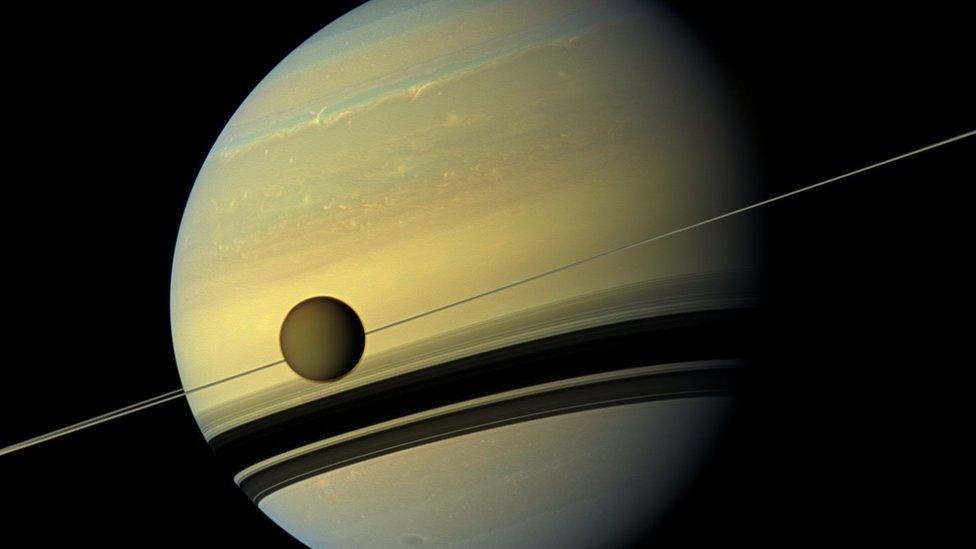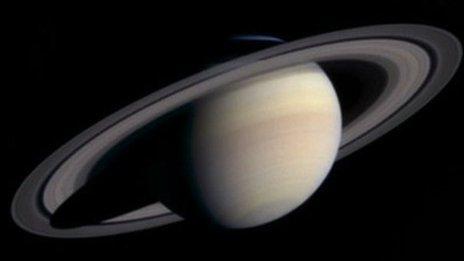Nasa reveal dramatic plan to end 20-year space mission
- Published
Watch Jenny's report about Cassini's explosive ending
Cassini began its incredible mission to Saturn back in 1997, reaching the ringed planet in 2004.
The aim of the spacecraft was to give the closest, most detailed look at Saturn's rings and its moons.
Amongst its many discoveries Cassini has found new moons orbiting the planet, signs of possible life on existing moons and huge underground oceans spewing fountains of water into space.

A detailed view of Saturn's rings made with images from Cassini
But now Cassini is running out of fuel.
As its journey comes to an end, scientists don't want to risk the craft crashing into Saturn's moons, which could damage the environment where there could be conditions for alien life.
On Tuesday scientists announced the plan for Cassini.
They will direct the spacecraft into Titan's orbit one last time, using it as a catapult to drive Cassini into a 12-mile gap in the rings, whilst travelling 70,000mph.

Saturn and its moon Titan
All the while Cassini will still be recording huge amounts of information. Nasa hopes to use it to learn more about the age of the rings and take a closer look at giant hurricanes at the north and south poles of the planet.
Finally, after 22 orbits Cassini will fall into the clouds.
Earl Maize, the mission's project manager, said: "It will break apart, it will melt, it will vaporize, and it will become part of the very planet it left Earth to explore."
Scientists will watch the incredible craft - at the end of its 20 year mission - disappear in minutes.
- Published14 July 2011

